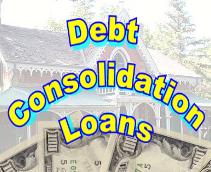|
Digital News Report – Americans are continuing to consolidate their debt while taking about more loans in the process. Common applications of debt consolidation loans are student loan obligations, car loans, and credit card debt.
There are two basic types of debt consolidation loans: secured and unsecured. Secured loans require homeowners to secure the loan with their home. This requires more paperwork but usually caries a lower interest rate.
A report from the Federal Reserve indicates that revolving credit increased from $798.2 billion in December to $800.5. Those outstanding obligations include credit cards. The amount of non-revolving consumer debt, not including mortgage debt, increased from $1606.1 billion to $1609.9 billion for the same time period.
Wells Fargo Bank says that consolidating your debt will not improve your credit score immediately, but “it can help you effectively manage and reduce your debt over time”.
The goal is to lower the borrower’s payments and total obligation. The lower payments will increase the discretionary spending of the borrower.
The bank offers several options, including rolling the debt into a balance transfer credit card. These cards provide a very low initial interest rate. This allows cardholders to pay off the loan with zero or near zero interest.
Personal loans are another option. “Consolidating debt with a Personal Loan can help you reduce interest costs and pay off debt faster,” the bank said in a statement.
Finally the debt consolidation home loan is available. Check with your financial advisor before going forward with this. There may be tax advantages, but the borrower is placing their home as collateral. Mortgage refinancing a home may be the best or worst option available.
By Tina Brown

